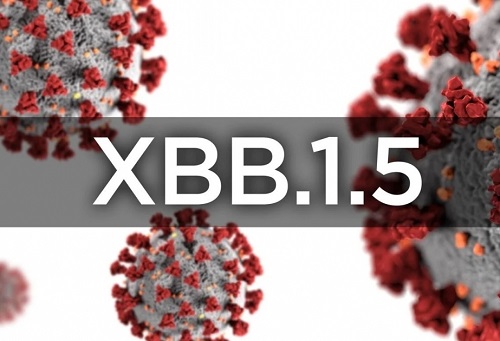Omicron subvariants BA.4 and BA.5 have dominated COVID-19 cases in the United States over the past few months. However, a new class of COVID subvariants is already emerging, and one in particular is receiving a lot of attention. It goes by the name of XBB, or Gryphon, and there’s a chance it will surpass all other systems.
According to William Schaffner, M.D., an infectious disease specialist and professor at the Vanderbilt University School of Medicine, XBB is generating a lot of buzz because it spreads quickly and appears to be able to evade immunity that people have developed from having a prior COVID-19 infection or from receiving the vaccine. We still have a lot to learn, adds Dr. Schaffner, adding that “it’s early days.”
Here is what we now know about XBB and why doctors are closely monitoring it.
What does XBB COVID stand for?
Thomas Russo, M.D., professor and chief of infectious disease at the University at Buffalo in New York, adds that XBB is one of the “new class” of Omicron variations that are currently spreading quickly. He lists these as BQ.1.1, BQ.1, BQ.1.3, BA.2.3.20, and XBB.
Amesh A. Adalja, M.D., a senior scholar at the Johns Hopkins Center for Health Security, notes that the XBB strain of Omicron is a hybrid of two strains of the BA.2 type of the bacteria. He continues, “It’s spreading effectively in Singapore right now.”
According to Singapore’s Ministry of Health, the variant was discovered for the first time in India in August 2022 and has since been found in more than 17 nations, including Australia, Bangladesh, Denmark, India, Japan, and the United States.
According to a pre-print study by researchers in China, XBB is expected to have the strongest capacity to evade antibody defences of these recently revealed COVID variants. The novel Omicron strains, and specifically XBB, were described in that study as “the most antibody-evasive strain examined, significantly exceeding BA.5 and nearing SARS-CoV-1 level.” If you’re not aware with it, SARS-CoV-1 is the coronavirus strain that causes SARS, a respiratory virus that can result in serious disease.
Meaning that, in contrast to earlier strains of COVID-19, the vaccine and having previously had COVID-19 are not believed to provide as much protection against XBB. According to the pre-print study, anti-XBB medications like Evusheld and bebtelovimab may also not be particularly effective.
According to Dr. Russo, “These variations are developing to avoid protection.” According to Dr. Russo, the bivalent booster will “likely be protective against severe disease” in people with XBB but will be “imperfect towards avoiding infection.”
Don’t panic, though. “When it comes to evasion of vaccine protection, it’s important to recognize that vaccine protection is not all or none,” Dr. Adalja says. “Even with immune-evasive variants, vaccine protection against what matters most—severe disease—remains intact.”
The XBB subvariant will peak when?
XBB currently has a number of unanswered questions. According to CDC data, BA.5 and BA.4.6 continue to be the most prevalent variations in the United States despite the fact that it has been found there.
According to Dr. Adalja, additional varieties are also beginning to proliferate. It is unknown which, if any, will supplant BA.4.6 and BA.5 in the United States. It’s uncertain if it—or another related variation like BQ.1.1—will become prevalent in the United States, but it’s likely to spread there to some extent, according to him.
According to Dr. Schaffner, the emergence of XBB and related variations is causing “some concern.” It’s critical to keep an eye on what transpires over the coming weeks, he asserts.
As of the time of publication, this article is true. However, some of the information might have changed since it was last updated due to the COVID-19 pandemic’s rapid evolution and the scientific community’s growing understanding of the unique coronavirus. While we make every effort to keep all of our stories current, you may also stay up to date on the most recent information by visiting the websites of the CDC, WHO, and your local public health agency. A doctor should always be consulted for medical advice.
symptoms of XBB variant
Thus far, XBB symptoms appear to be comparable to COVID-19 symptoms in general. The following are some examples, per the Centers for Disease Control and Prevention (CDC):
- Shortness of breath or difficulty breathing
- New loss of taste or smell
- Congestion or runny nose
- Muscle or body aches
- Nausea or vomiting
- Diarrhea
- Fatigue
- Headache
- Fever or chills
- Cough
The XBB subvariant has how much contagion?
XBB is regarded as being extremely contagious, just like other Omicron strains. According to Singapore’s Ministry of Health, the variant currently accounts for 54% of COVID-19 cases there, up from 22% the week prior.
XBB is “at least as transmissible as currently circulating variations,” according to Singapore’s Ministry of Health, but it also states that “there is no indication that XBB causes more severe illness.”
